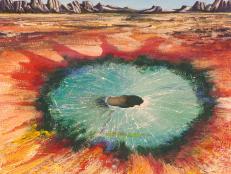SPACE OUT with Paul M. Sutter
All SPACE OUT Articles
Showing 136 - 150 of 153 results
Why Does Pluto Have Such a Weird Orbit?
Pluto is the black sheep of the planets in our solar system and it looks like astronomers aren’t sure how long Pluto will remain in its present orbit.
The Kuiper Belt: When Solar Systems Dance
Pluto isn't alone after all. Besides being the home of Pluto, the Kuiper belt hosts dwarf planets, and smaller bits of rock and ice.
2020: A Year of Big Leaps for Mankind
Here are a variety of some amazing space launches to look forward to in 2020.
Tune in to the 92nd Astronomical Awards!
With award season in high gear and movie stars flocking to Hollywood, let’s look up to the real stars in our lives and celebrate some of astronomy’s biggest results from last year.
Check Out the Crab Nebula –The Leftovers from a Giant Cosmic Firework
The Crab Nebula sits 6,500 light-years away, and is currently about 11 light-years across. But while it looks pretty from afar, don’t give in to the temptation to visit it up close.
India’s Space Agency is Going Big… By Going Small
Astrophysicist Paul M. Sutter shares the latest in the world of rocket launches and what India’s SSLV is all about.
Where should we go? The Moon or Mars?
There’s been a lot of excitement around space exploration recently. Astrophysicist Paul M. Sutter discusses the viability between the Moon and Mars.
Check out the Earth’s 800,000 Year Old Battle Wound
Scientists may have discovered the location of an ancient buried crater, a result of a meteorite that barreled into the Earth some 800,000 years ago.
SpaceX vs. the Universe
Fans of space are having a tough time picking sides over a recent controversy between SpaceX and astronomers. But what's the big debate all about? Astrophysicist Paul M. Sutter digs into both perspectives.
That’s a (Weirdly) Big Black Hole!
Recently astronomers identified a black hole near a star called LB-1 and they found out that the black hole is 70 times the mass of the sun. This is a mystery because the biggest black holes we can get from the deaths of the most massive stars are around 30 times the mass of the sun, so how did black hole get this big?
All Aboard the Starliner!
Boeing’s Starliner capsule launched on Friday. Astrophysicist Paul M Sutter has everything you need to know about the Starliner and its mission.
Let’s Look for Water on the Moon
NASA is headed to the moon, but this time it's in search of water. Astrophysicist Paul M Sutter shares what this means and why it's important.
Last Call for the King of Planets
This month Jupiter is entering conjunction which means it's the last chance this year to catch a glimpse of the largest planet in our solar system.
Voyager 2 is Really Far Out There, Man
Currently Voyager 2 is about 11 billion miles from the Earth, and has been traveling at speeds of tens of thousands of miles per hour since its launch in 1977. Read more to see where it is now and what we've learned.
A Guide to Defending the Earth
Let’s say one day astronomers announce that our worst nightmare has come true: a large object is headed towards the Earth with a significant chance of impact. What do we do?


























